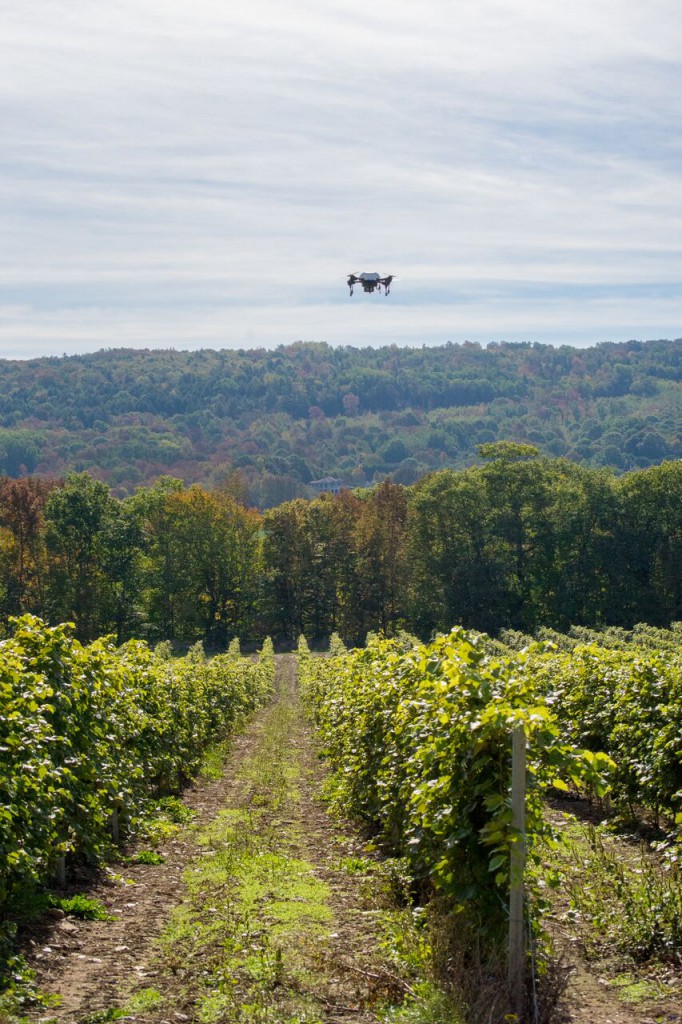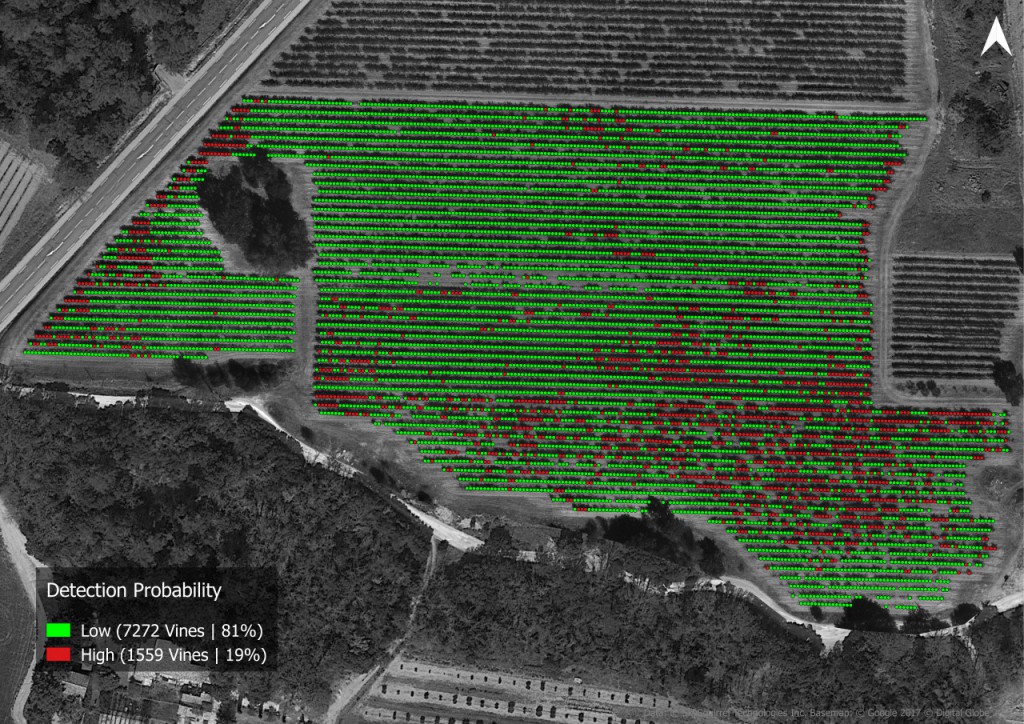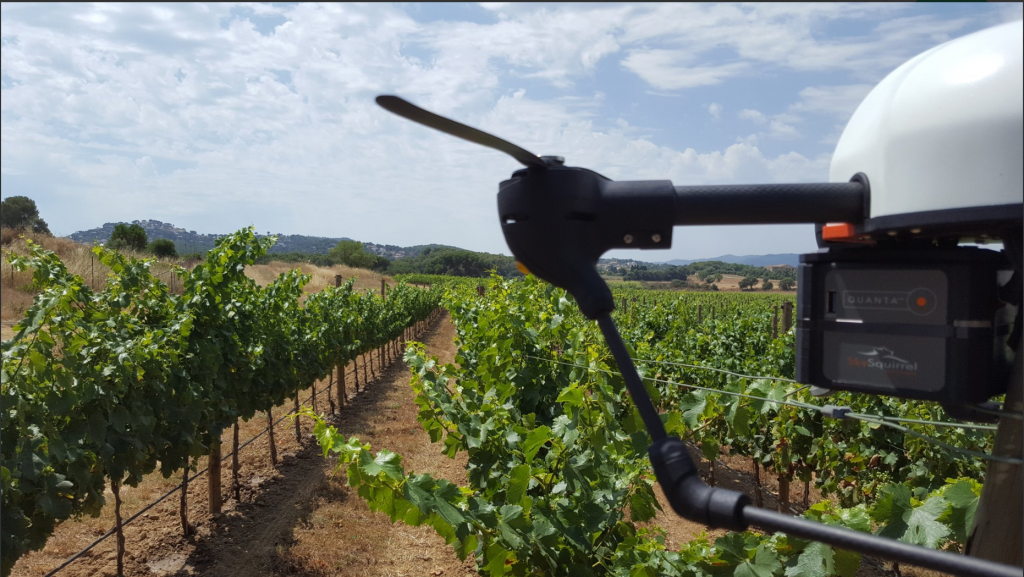 Last summer, Grape Growers of Ontario began working with VineView (formerly SkySquirrel Technologies Inc.) to bring one-of-a-kind innovation overhead Niagara Region vineyards.
Last summer, Grape Growers of Ontario began working with VineView (formerly SkySquirrel Technologies Inc.) to bring one-of-a-kind innovation overhead Niagara Region vineyards.
The drone and airplane-based technology is providing grape growers around the globe with unprecedented measurements of grapevine health, and has been a mighty leap forward for the Niagara wine industry.
Based on NASA technology, the measurements come from highly specialized aerial-based sensors and a cloud-based image processing service that can determine grapevine vigor and detect disease.
“Grape Growers of Ontario are always looking for new ways to invest in research and innovation in order to produce the highest quality grapes possible,” shares CEO of Grape Growers of Ontario, Debbie Zimmerman. “Our growers have a long history of overcoming challenges by adopting innovative and novel viticultural practices and we continue to do so with our partnership with VineView.”
At the beginning of this year, Canadian-based SkySquirrel and California-based VineView Imaging—both leading providers of aerial imaging and crop diagnostics for vineyards—announced a merger under the name VineView.
After merging their technologies, customers and resources, the new VineView is driving vineyard technology forward in 12 countries and counting.
“Through these sort of innovations we can move toward more environmentally sustainable practices in agriculture,” shares Emily Ennett, VineView’s Marketing & Business Development Manager. “Using technology like ours, and other innovations in ag, allows us to use less inputs (e.g. spray) to achieve greater outputs.”
Specifically, drone and airplane-based hyperspectral imagery provides growers with specialized data about the health of their grapevines, allowing growers to optimize yields, improve grape quality and reduce damage from environmental factors like grapevine diseases and frost.
Of course, there are a variety of things to deal with in different climates, and the uses for the technology are quite extensive.
Grape Growers of Ontario were excited to bring the technology to Niagara for the impressive EVI (enhanced vegetation index) mapping, which measures vine health and maps grape vine disease.
Consumers might not like to hear the word ‘disease’ when it comes to their crops, but the fact is it’s an inescapable part of nature – and innovative technologies are the solutions helping us work with the inevitable, and in a sustainable, efficient way.
A large concern in certain Canadian regions is Grapevine Leafroll Disease, which affects up to 50% of vineyards globally and can have devastating impacts. VineView’s technology is one of the only (if not the only) technology that detects leafroll, so it isn’t difficult to appreciate that this is a game changer.
“It’s estimated that vineyards infected with leafroll can lose up to $40,000 of profits per hectare,” VineView explains, “cutting their average 30-year lifespan in half.”
Understandably, some Niagara growers, through the Grape Growers of Ontario, wanted to harness this technology to analyze and manage their vineyards.
The mapping is sometimes simply a preventative measure to ensure there is no disease; but, if anything is detected, the vine is uprooted and replanted (no pesticide treatment). The technology is able to detect the individual vines, offering vine-by-vine information to the grower so they know which vines to closely monitor.
As VineView states, it’s “just the information you want, and none of the noise.”
Its efficiency, which allows growers to zero in on problems quickly and directly, is unparalleled. Before turning to aerial-based methods, for instance, one vineyard was using ground-based scouting for every row of the field to identify infected plants: a laborious and time-consuming method that resulted in errors and inaccurate estimates.
The hyperspectral approach provides better estimates of total infection rate, while also offering valuable detection maps that show the exact locations where the disease had spread — important for planning control measures and monitoring status over time.
“We are excited to be working on developing a program [with VineView] that would allow us to sample on a broader range, much faster, more efficiently, and with a faster turnaround time for results than traditional tissue sampling,” explains Craig Wismer, President, Glen Elgin Vineyard Management. “Drone flights are much cheaper than manual sampling and can be done more frequently to monitor for ongoing virus infections, reinfection instances, and to track virus spread patterns…and generate maps with vine-by-vine detail. This level of detail allows us to isolate infected vines and begin to remove infected vines to begin to sanitize vineyard blocks…a huge step forward for virus management in Niagara.”
Forward-thinking grape growers around the globe, including now some in the Region of Niagara, are harvesting necessary data and information through emerging, innovative technologies, ultimately maximizing efficiency and increasing healthy yields.
Learn more at VineView.ca.

